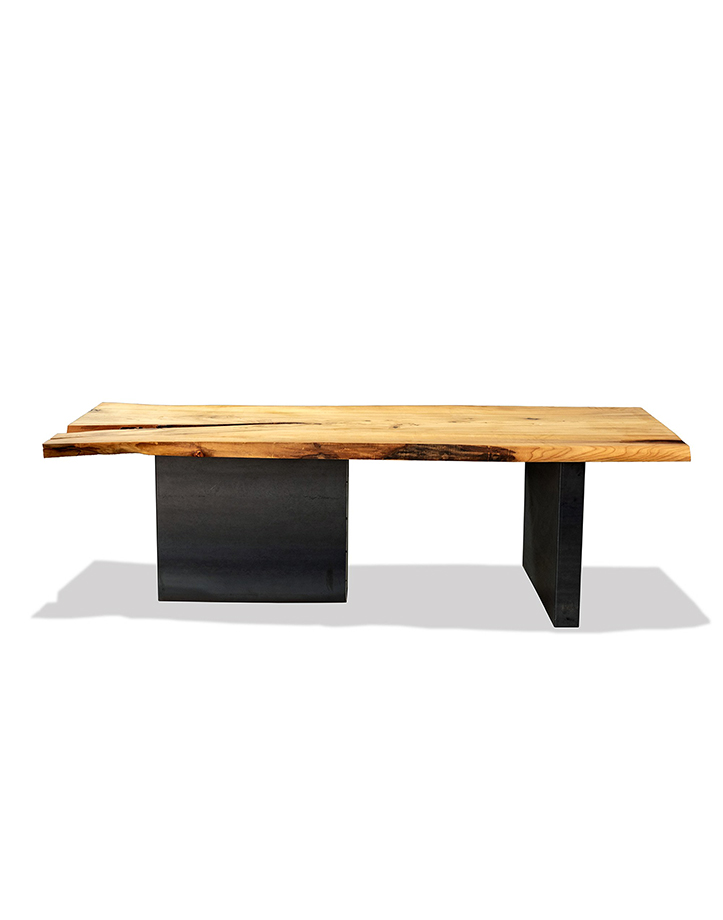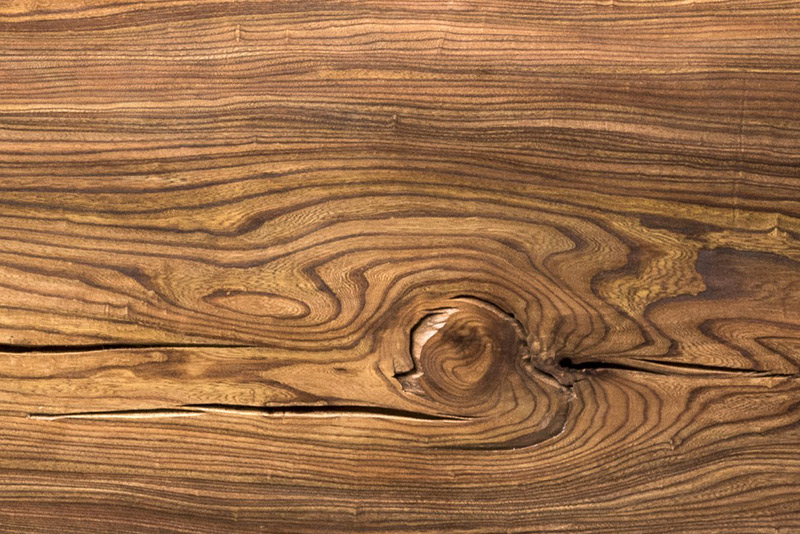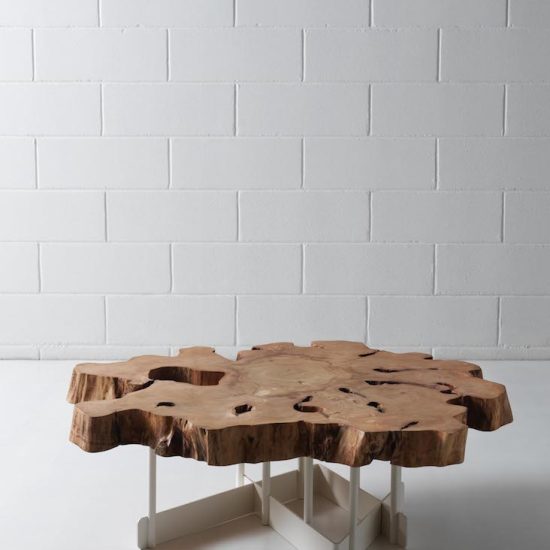During the 19th century, elms were a common presence in all private and public parks, but in the early 20th century, they were decimated by a disease, Dutch elm disease. That’s why this tree, planted in a private park between the 1830s and 1840s, could be considered an absolute rarity.
Created by the original formation of the tree, where a main branch joined the trunk, the fissure is the standout feature of the table. It can be filled with resin to create a unified surface, or left open, to accentuate the powerful expressive force of a true protagonist: yesterday in an ancient park, today in a new interior landscape.
Elm wood top with oil wax finish.
Bases in transparently painted iron.




